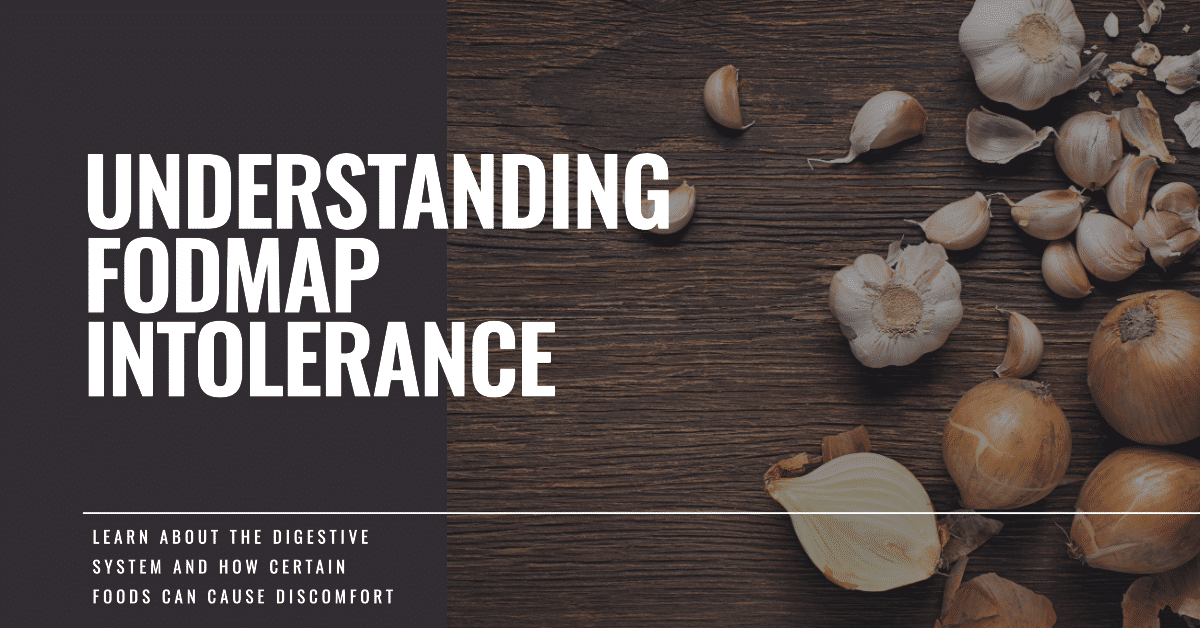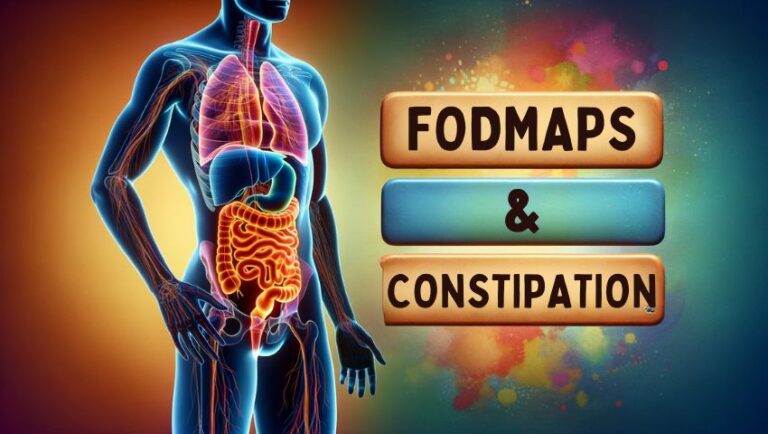What Causes FODMAP Intolerance? My Battle and Breakthroughs Unveiled

Oh, FODMAPs. Those tricky little sugars that wreaked havoc on my stomach for years. Ever asked yourself what causes FODMAP intolerance?
I did, a gazillion times, especially after getting my celiac and IBS diagnosis in 2021.
Let’s dive deep into the nitty-gritty of FODMAP intolerance – the what, why, and how.
Key Takeaways
- FODMAP intolerance is tied to undigested sugars, causing havoc in the gut.
- It’s closely linked to people with IBS symptoms.
- A low-FODMAP diet can ease symptoms, but it’s not a one-size-fits-all solution.
- Working with a dietitian can help pinpoint specific triggers.
- High FODMAP foods might not be forever off-limits; intolerance can vary.
FODMAPs Unmasked: What Are They?
FODMAPs – those short-chain carbohydrates and sugars that are poorly absorbed in the bodies of many IBS sufferers (myself included). They include fructose, lactose, fructans, galacto-oligosaccharides (GOS), and polyols.
Yup, the things that made certain foods my worst enemy.
Found in various fruits, vegetables, whole grains, and more, they’re not inherently bad. But for some of us, they’re a digestive disaster.
I remember the days when foods high in FODMAPs, like apples and garlic, would leave me bloated and miserable.
It felt like my intestine was in constant revolt. The digestive system should break down these carbs, but for folks like me, they linger and ferment, causing gas and discomfort.
The Gut’s Reaction: Why the Intolerance?
FODMAPs, when poorly absorbed, get fermented by gut bacteria in the large intestine.
That leads to gas, bloat, and other delightful IBS symptoms. Yay. Plus, these sugars draw extra water into the intestine, amplifying the discomfort.
I often found myself wondering, “Why me?”. Well, FODMAP intolerance often goes hand in hand with IBS. While not everyone with IBS is intolerant to FODMAPs, a significant number are.
The kicker? There’s no one cause for FODMAP intolerance. It’s a mix of genetics, gut bacteria balance, and how your intestine processes these carbs.
Dietary Decisions: The Low FODMAP Approach
After my diagnosis, I learned about the low FODMAP diet. It’s not a lifetime sentence, but a temporary measure to alleviate symptoms.
With the guidance of a savvy dietitian, you eliminate high FODMAP foods, then reintroduce them slowly to identify culprits. It’s tedious but enlightening.
A shout-out to this guide on IBS trigger foods, which may just be a lifesaver for you, just as it was for me.
And if you’re juggling IBS and celiac like me, you’ll find this piece on celiac and IBS super insightful.
But remember, what helps someone else might not work for you. It took me a while, with some trial and error, to find what worked best for me.
Personal Experiences and Silver Linings
Living with FODMAP intolerance is like walking a dietary tightrope. There are challenges, frustrations, but also a lot of learning.
While I’ve had to give up or limit some of my favorite foods, I’ve also discovered new, delicious, and gut-friendly alternatives.
Navigating the world of FODMAPs also brought unexpected silver linings. I became more attuned to my body, understanding its signals and needs.
And while the IBS flare-ups were brutal, they taught me resilience and the importance of self-care. Through it all, my mantra has been: learn, adapt, and keep going.
The Intricacies of FODMAP Intolerance
Living with both celiac disease and IBS since 2021, I’ve come to recognize the deep relationship between what I eat and how I feel.
It became clear that managing my symptoms wasn’t just about avoiding gluten but also being mindful of the FODMAPs in my diet.
FODMAPs are a group of fermentable carbs that are found in various foods, including some fruits, vegetables, and grains.
These substances can create a riot in the gut, especially for people with irritable bowel syndrome (IBS).
As someone who personally navigates through the complications of IBS daily, I’d emphasize the significance of understanding what FODMAPs are and how they impact our digestive system.
Low FODMAP Diet: A Game-Changer
Taking charge of your IBS symptoms begins with learning how to manage your diet properly.
A low FODMAP diet involves eliminating high FODMAP foods temporarily and then reintroducing them gradually to pinpoint the ones that trigger the symptoms.
Such an approach has been a lifeline in my ongoing battle with IBS. It allowed me to identify the foods that aggravated my gut and, quite honestly, made a considerable difference in my overall well-being.
The transition wasn’t smooth, I won’t lie. I found it somewhat challenging to find foods that were both gluten-free and low in FODMAPs.
But, the effort was worth it.
It led me to discover various delicious options that didn’t irritate my intestine. My personal experience corroborates the findings that indicate the effectiveness of a low FODMAP diet in managing IBS symptoms.
You might find it beneficial to consult a dietitian to guide you, ensuring a balanced and healthy eating plan.
Busting the Myths about High FODMAP Foods
Misconceptions are aplenty when it comes to high FODMAP foods. It’s often believed that these foods are “unhealthy”, which isn’t the case. These foods contain vital nutrients that are essential for individuals without IBS.
As someone who has had to drastically change my eating habits, I feel it’s crucial to clarify that removing high FODMAP foods is not about dismissing certain food groups entirely.
It’s about learning to make choices that align with your individual health needs and digestive system capabilities.
During my transition to a low FODMAP diet, I cherished the moments where I could enjoy meals without the dread of impending abdominal pain.
The diet isn’t about restriction, but liberation from the symptoms that have held me hostage for years.
Remember, the journey is personal and what works for one may not work for all. It’s all about finding a balance that allows you to live a fulfilling, symptom-free life.
Identifying FODMAP Intolerance Symptoms
While everyone’s body reacts differently, there are common signs that indicate an intolerance to FODMAPs. As a diagnosed celiac and IBS sufferer, it’s pivotal for me to stay attuned to any new or intensified symptoms.
Bloating, constipation, and frequent trips to the restroom are the usual suspects. But, there’s also the unsettling feeling of gas and abdominal pain.
These symptoms could often be mistaken for a gluten reaction, especially for someone with celiac disease.
However, upon closer observation, one might notice that these reactions often come after consuming high-FODMAP foods.
What Causes FODMAP Intolerance? – Final Thoughts
Living with celiac disease and/or IBS can sometimes feel like walking through a dietary minefield.
But with adequate knowledge and mindful choices, life can be as flavorful as ever. Embracing a low FODMAP diet was transformative for me, offering a fresh perspective on food and its connection to well-being.
While the road might have its bumps, the journey towards better digestive health is well worth every step. If you ever wonder about how common IBS is and why, here’s a piece you may find insightful: why is IBS so common?
Disclaimer: This content is based on my personal experience as an individual diagnosed with celiac disease and IBS (Irritable Bowel Syndrome) who follows a strict gluten-free diet. This does not constitute medical advice. Please consult a medical professional, nutritionist, or qualified dietitian for personalized, professional advice.

